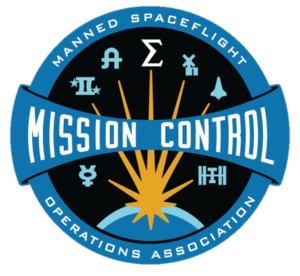HISTORY
From the early days of Mercury to the lunar adventures of Apollo, from the innovation of the space shuttle to the technological advancements of the International Space Station, NASA has enjoyed several successful human space flight programs for more than four decades. Click on the upper HISTORY button above for more information.
PROJECTS
The MSOA is considering the following projects:
- Reunions (The next Apollo reunion is at the SCH on July 20/21)
- Celebrations (The 50th Anniversary of the First Lunar Landing)
- Biographies (As part of a History Project)
- Speakers
- Docents for MCC tours
- Collections of artifacts
- SCH Control Center displays
- Newsletter
- Monuments/Memorials
- Others TBD
STEM
The MSOA is considering an educational project to promote science, technology, engineering and mathematics as part of our mission to encourage young people to study for aerospace careers. This could also be part of our role to provide speakers for school presentations.
What is manned spaceflight operations?
The term “flight operations” has had a variety of meanings to different groups of people and at different times in history. It has somewhat different meanings to military aviation organizations and both military and civilian space flight operations organizations. The term takes on an expanded meaning when the flights include a crew. The Manned Spaceflight Operations Association (MSOA) uses the term as it relates to NASA’s manned space programs. In the context of the Apollo Mission Control Center, the term has its basis in how it was defined for Project Mercury. Over the course of many spaceflight programs; culminating in the manned lunar landing missions, the term has only become more encompassing and complex in its implementation.
After Sputnik, and just after the formation of NASA on October 1, 1958, and the Space Task Group later that month, 34 year old Christopher Columbus Kraft, Jr. was given the responsibility to write a “flight test” plan for an orbital mission.
The more that Kraft and the Space Task Group (STG) studied the problem of how to control an orbital mission, the more the concepts fell into place. Kraft presented his concept for Project Mercury manned spaceflight operations to the Society of Experimental Test Pilots on October 9, 1959. Kraft described the Mercury Control Center concept in terms of very specific positions with duties and responsibilities. These “operational functions” were duly manifested in the consoles and displays that defined the Mercury Control Center. After the Houston control center was built this main room would be referred to as the Mission Operations Control Room (MOCR) and are now, a half century later called the Flight Control Room (FCR).
This operational concept of identifying who has responsibility for what during the various phases of a mission, then specifying the displays and controls that they will require in order to perform their individual duties, still defines manned spaceflight operations and mission control over half a century later. This is a testament to Kraft’s vision.

The MSOA patch was designed by Michael Okuda in 2017 and is based on the original McCall design themes using the Sigma and symbols of all the missions; Mercury, Gemini, Apollo, Skylab, Shuttle and the International Space Station.
